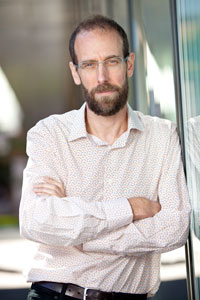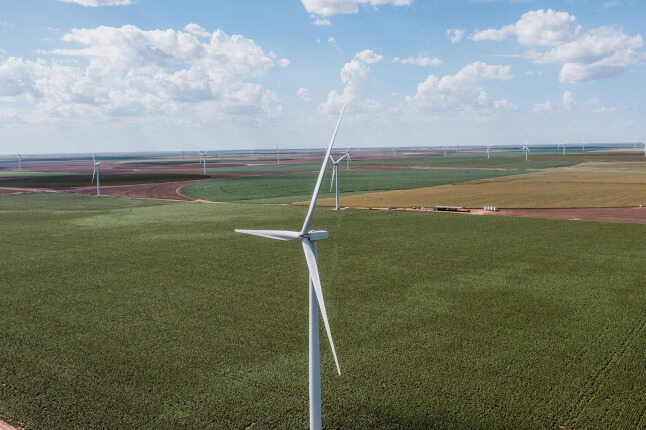News
David Keith is Gordon McKay Professor of Applied Physics at the Harvard School of Engineering and Applied Sciences, and Professor of Public Policy at Harvard Kennedy School.
David Keith is Gordon McKay Professor of Applied Physics at the Harvard School of Engineering and Applied Sciences, and Professor of Public Policy at Harvard Kennedy School. The award-winning scientist, who was named one of TIME magazine's Heroes of the Environment in 2009, has worked near the interface of climate science, energy technology, and public policy for twenty years. He divides his time between Boston and Calgary, where he serves as president of Carbon Engineering—a start-up company developing industrial-scale technologies for capture of CO2 from ambient air. Here, Keith answers questions about his research and ideas for reducing climate change using innovative and sometimes controversial methods.
The following Q&A is republished, with permission, from the newsletter of the Belfer Center for Science and International Affairs, Harvard Kennedy School (original post).
Q. TED describes you as a “wildly original thinker [who] challenges us to look at climate solutions that may seem daring, sometimes even shocking.” What are some of your favorite, daring ideas to reduce climate change?
My favorite idea is pedestrian: put a price on carbon emissions to discourage use of the atmosphere as a free waste dump. This idea is at once commonplace and radical. A price on emissions such as a tax is admission that government does not know exactly which methods will prove most effective in reducing emissions, so the best way to make progress is to build the cost of emissions into prices across the economy and let firms and individuals figure it out in a distributed way. Most carbon-related policy to date has focused on promoting particular technologies such as solar on rooftops. While some of this has been useful, the net effect has been to spend very large amounts of money (the world now spends more than $200 billion per year on clean energy) on things that are relatively cost-ineffective as measured by their short-term ability to restrain emissions.
Q. You gave a talk at Harvard recently titled “The Risks and Efficacy of Solar Engineering.” Solar engineering involves injecting a substance into the upper atmosphere that will reflect some sunlight back into space in order to cool the earth. What are the main benefits of this method and do the benefits outweigh the risks?
The benefit is that solar geoengineering may enable us to reduce the risk of climate change from emissions that have already occurred. While we will ultimately have to cut emissions to nearly zero to stabilize the climate, “ultimately” is a long way off, and near-term emissions reductions do very little to reduce near-term climate risks such as temperature extremes that may cause crop losses whose impacts will fall on the most vulnerable populations over the next half century. Solar geoengineering offers the prospect of materially reducing climate risk for current generations and of slowing large-scale climatic change suchas the loss of Arctic Sea ice. While it sounds hyperbolic and promotional, there is literally no other method we know to achieve this.
The enormous power of solar geoengineering—the leverage that enables small low-cost inputs to create profound climate changes—presents novel and serious risks. The greatest challenges are not technical but rather the development of effective governance. Solar geoengineering cannot be localized, so implementations by one country will affect others in ways that could—in the worst case—be profoundly damaging. We require governance systems that can manage near-term research in a way that balances the benefits of knowledge against risks, and manages decisions about deployment in a way that is able to achieve some measure of democratic legitimacy in a multipolar world.
Q. How can you be confident that working on solar geoengineering will not reduce popular and political will for reducing greenhouse gas emissions?
I can’t be. On the contrary, I think there is a real prospect that if solar geoengineering is found to be effective it will reduce political will to cut emissions compared to what it would be otherwise. Current political will to cut emissions is low so that may not make things materially worse. If one is optimistic, one might hope that the injection of this new technology into climate policy will energize the topic, breaking the static trench warfare that now characterizes much of the debate about climate and perhaps producing a better outcome. But, that is a wish, not a prediction.
Q. Why have humans failed so spectacularly to curb greenhouse gas emissions so far—and is there is a no-turning-back deadline regarding global warming?
I don’t know. One answer may lie in the fact that language of environmental advocacy has become increasingly technocratic. Calls for action often stress quantitative measures and self-interest. We are urged to protect the natural environments because of the “ecosystem services” they yield. These arguments have merit, but I suspect they obscure much of what actually drives people’s choices. If we are protecting a rain forest because it stores carbon or yields wonder drugs, then we should be happy to cut down the forest if some carbon storage machine or molecular biotech lab can better provide these services. The utilitarian benefits of the natural world are real, but for me they are a grossly insufficient measure of its value. While I may be an extreme, I think I am not alone, and I suspect that a more directly value-driven conversation about climate might be more effective than the current debate.
Our climate choices would be easy if we really were facing an imminent existential threat. A true emergency justifies extreme measures, a narrow focus on a single problem and suspension of democratic due process. Imagine how the world might collaborate if we discovered a massive asteroid inbound for a 2050 impact. But, this is not what we face. Claims that climate change threatens a similarly sharp catastrophe are a rhetorical device to avoid an honest debate about the trade-offs at the heart of climate policy and about the values that drive our choices.
Q. Outside the office, you are an avid hiker and haveadventured through the Canadian wilderness, the high Arctic, and theHimalayas. Have these experiences shaped your approach to your work onthe environment and climate?
I have been unusually lucky in getting a chance to experience big wilderness, to go on multi-week expeditionary trips away from other people in places like the Canadian high Arctic. This is certainly related to my work on exploring non-utilitarian justifications for climate action, though I don’t think much about work when I am outside.
Topics: Environment, Climate
Cutting-edge science delivered direct to your inbox.
Join the Harvard SEAS mailing list.
Scientist Profiles
David Keith
Associate in Environmental Science and Engineering




